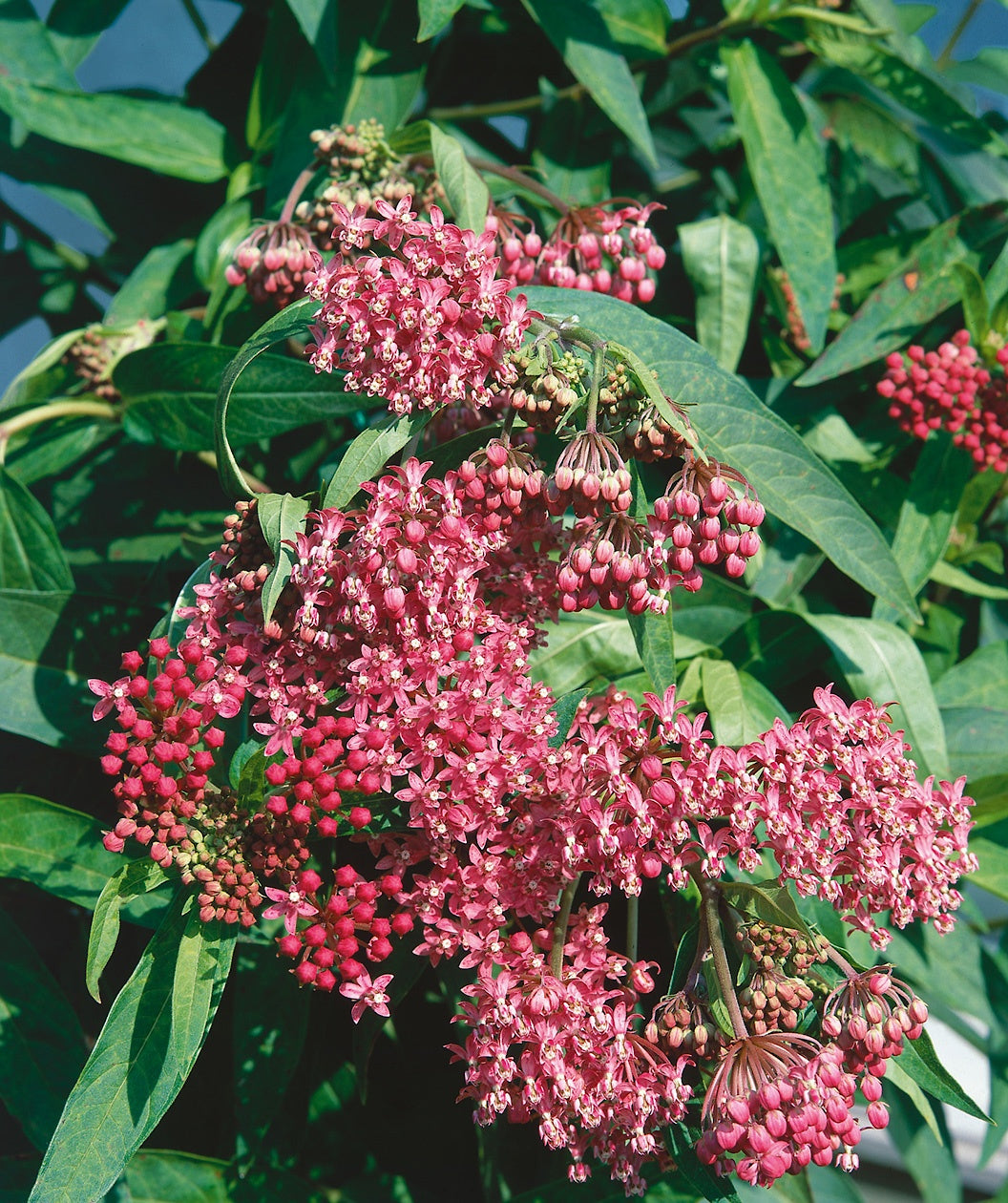BOLDLY PINK AND SHOWY BLOOMS COVER THIS DARLING NATIVE FOR MONTHS
FEATURES:
- Bright pink to white blooms that resemble stars open in early summer
- Dark green, long and oval-shaped foliage serve as a never-ending buffet to Monarch caterpillars
- Serves as a host plant for Monarch butterflies to lay their eggs and as a source of nectar
- Pollinator friendly and attracts hummingbirds
- A stunning addition to a rain garden, a pollinator garden or as a stand alone native in your landscape
-
Hand Selected, Fresh from the Grower
- Ships in a plant-safe designed box
Growth Facts
- Hardiness Zone: 3-8
- Mature Height: 3-5' tall
- Mature Width: 2-3' wide
- Exposure: Full Sun
- Spacing: 2-3' apart
BOLDLY PINK AND SHOWY BLOOMS COVER THIS DARLING NATIVE FOR MONTHS
FEATURES:
- Bright pink to white blooms that resemble stars open in early summer
- Dark green, long and oval-shaped foliage serve as a never-ending buffet to Monarch caterpillars
- Serves as a host plant for Monarch butterflies to lay their eggs and as a source of nectar
- Pollinator friendly and attracts hummingbirds
- A stunning addition to a rain garden, a pollinator garden or as a stand alone native in your landscape
-
Hand Selected, Fresh from the Grower
- Ships in a plant-safe designed box
Growth Facts
- Hardiness Zone: 3-8
- Mature Height: 3-5' tall
- Mature Width: 2-3' wide
- Exposure: Full Sun
- Spacing: 2-3' apart
Why plant Swamp Milkweed?
The monarchs applaud your choice! You may choose Swamp Milkweed for its intricate, rosy pink flowers that give off the delicious scent of vanilla, but monarch butterflies view this Spirit as a life-giving host plant. Milkweed leaves are the only thing that monarch caterpillars eat. Fritillaries, swallowtails, and many other gorgeous butterflies may also visit its blossoms to sip its sweet nectar. Hummingbirds may zoom in for a drink, too. Plant Swamp Milkweed within view of your deck or patio, so you can enjoy watching the aeronautics of all the winged creatures that come to visit this special plant.
Milkweed was a hero in World War II. When Japan occupied the Indonesian island of Java, the Allies lost their access to tropical Kapok Trees, which provided the buoyant stuffing for life preservers. Resourceful engineers looked to the Common Milkweed and the Swamp Milkweed instead, which produce little silky floss parachutes to carry their seeds through the air. The floss served as an excellent substitute for Kapok fibers, and American schoolchildren were recruited to gather Milkweed pods for the war effort. It is estimated that 11 million pounds of Milkweed were gathered for the troops!
How to use Swamp Milkweed in the landscape?
As you may have guessed by the name, Swamp Milkweed enjoys a site where it can receive plenty of moisture. It’s perfect for a rain garden or for that low spot in your yard that always seems to stay soggy. However, it does just fine in regular garden conditions, too.
Planting Zones
Hardiness Zone: 3-8
How To Plant Swamp Milkweed
Grow Swamp Milkweed in full sun for best results and irrigate regularly. Do not let it dry out. Plants will be tall and lush in wet soil, a bit shorter and more compact in average conditions. One problem that may affect Swamp Milkweed is aphids feeding on the new growth. Simply knock them off with a jet of water from the hose. Do not use pesticides on or near this monarch butterfly host plant!
How To Prune
Cut plants back in late fall or any time before new growth appears in the spring. Swamp Milkweed is late to emerge, and it’s a good idea to mark its location before it goes dormant for the winter, so you remember where it is.





